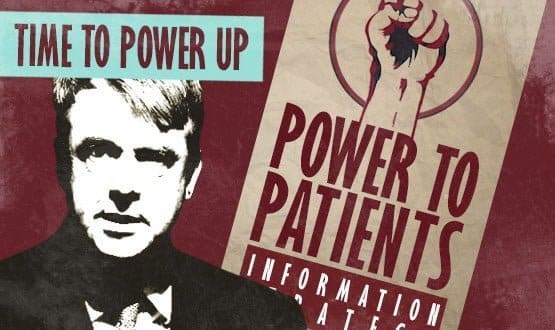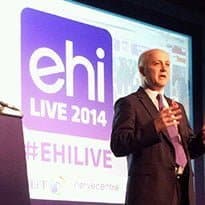Time to power up
- 24 May 2012

The long-awaited NHS information strategy was finally published this week, setting out a vision for giving all those involved in health and social care – but particularly patients – far better access to information and digital services.
The strategy’s thrust has been widely welcomed. Mike Farrar, chief executive of the NHS Confederation, summed this up when he said “clear and comparable information is vital for creating a responsive and sustainable NHS” while “proposals to allow patients to have greater online access to more services is a positive step forward.”
A few ifs, a few buts
However, as the details of ‘The Power of Information: putting all of us in control of the health and care information we need’ have been digested, analysts, NHS managers and IT suppliers have raised some doubts.
Some have questioned why the Power of Information makes so little reference to what has gone before it; and to the pressing need for central direction on standards to make sure that systems are integrated in the future and that all users can understand the information extracted from them.
Others have suggested that even when the strategy draws attention to useful technologies, it does not go as far as it could. And then there are big questions about who will be responsible for delivery – and where the money will come from.
Jonathan Edwards, managing director for research and insights at The Advisory Board Company, said: "The strategy contains a lot of great ideas, but almost nothing in the way of guidance to NHS trusts on how to implement those ideas.
"It begs the question of why the DH didn’t issue a companion document called ‘How the NHS can maximise the power of information’."
The Power of Information makes a virtue of the fact that, unlike previous NHS information strategies, it does not set down targets, lay out in detail how its aims will be achieved, or mandate new bodies to deliver them.
Long-term observer of the NHS IT scene Murray Bywater, the managing director of Silicon Bridge, welcomed this, saying the approach of the Power of Information was “eminently sensible, practical and much more aligned to reality” than the “overblown cloud of the national programme, which was a very flawed dream.”
Nevertheless, Bywater was concerned that the vision would be out of reach for some trusts. “The main players in the NHS have already delivered, the second division players are on their way, but the third division – well, the jury remains out.”
Where are the standards?
The ‘making it happen’ section of the document recognises that “a small number of actions” will have to be led nationally by organisations including the NHS Commissioning Board, the Health and Social Care Information Centre and Public Health England.
But a number of commenters shared Bywater’s concern that this is just too vague. Andy Gordon-Jones, director of healthcare at Northgate Public Services, pointed out that while the strategy makes little or no mention of them, there is a large installed base of legacy systems in use in the NHS.
“Understanding what is already out there and how these systems can be integrated will be a large body of work,” he pointed out. And it is not clear who will do it.
Justin Whatling, speaking as vice-chair of strategy and policy for BCS Health, said it would have liked the strategy to go “much further” in terms of “emphasising re-use of globally utilised, supplier driven standards and establishing a vision and strategy around accreditation and certification to those standards.”
Similarly, Professor Michael Thick, vice president of clinical strategy and governance at McKesson, and a former advisor to NHS Connecting for Health, said sharing information across boundaries would “depend on the ability of It systems to talk to one another” so “the challenge of interoperability must be overcome.”
“Companies wishing to supply IT solution to the NHS must unite around a common data model and a common coding system, and comply with the Information Standards Board outputs that already exist,” he argued. “It simply needs to be put in place and directive enough to make a difference.”
But will it be directive enough? Veena Raleigh, senior fellow at the King’s Fund, warned that: “Much will depend on the rigour with which this is undertaken by the NHS Commissioning Board.
“It is critical that compliance with these standards is monitored, but the Care Quality Commission may not be best placed to take this on, given the significant challenges it already faces. There may be a role for the NHS Information Centre here, with the CQC using its leverage where compliance appears weak.”
Bigger and better portals
A number of GP suppliers have noted that much of what the strategy calls for around patient access to records and primary care services can already be delivered by their systems.
Ana Nicholls, healthcare analyst at the Economist Intelligence Unit, said proposals for a national patient portal might also been less than they seemed. “I can’t see how the proposed NHS information portal differs from those already available on the NHS and NHS Direct sites, which are fairly good at giving general health information,” she said.
The authors of the Power of Information have clearly seen a number of portals in action, and been impressed enough by them to recommend their use by trusts, across health communities, and for patients. Yet even portal suppliers think it could have gone further.
Harris Healthcare, which bought portal supplier Carefx, said in a statement that it would have liked the strategy to look at some of the “more ambitious” portal solutions around, which go beyond simply giving users access to information and “enable users to actively input and extract information.”
And Dr Pradeep Ramayya, chief executive of AxSys Technology, said: “For integration to become a reality, we need more than just the functionality of a portal. For information to become valuable, the issue is not just access, it is clinical interpretation, reporting and enabling active care co-ordination across boundaries, and we need systems that can provide this.”
He argued that the NHS should look at platforms for doing this in the USA and at some NHS trusts that have built ‘best of breed’ strategies around portals.
Funding and training
One glaring omission from the strategy is the lack of detail about how it will be funded. As Dr Raleigh from the King’s Fund noted: “At a time of unprecedented financial constraint, some commissioners and providers will find it challenging to invest in developing systems rather than frontline services.”
Nicholls said she welcomed the strategy’s support for technologies that might reduce paperwork and so increase capacity and efficiency.
“The proposed use of barcodes and digital pens is a case in point,” she said. “What I would like to see is an easier way for health practitioners to share tips about using such technology, so best practice can spread.”
Another omission – or area that could have been further stressed – is leadership and training. Professor Thick pointed out that much of the challenge to getting IT and information used in the NHS is “cultural” and rather than technical or financial, and that clinicians need to become “more innovative” in the way they work.
The strategy gives a big push to the appointment of chief clinical information officers, which eHealth Insider has been championing with its EHI CCIO Campaign and CCIO Leaders Network, and this was welcomed by BCS Health, among others.
But UKCHIP, which represents NHS IT professionals, said the role of IT professionals also needed to be recognised. “Professional accreditation has been independently available through UKCHIP for some time,” said council member Mik Horswell, adding that the organisation wants to work with the NHS Commissioning Board and others “to make that opportunity available to all informaticians.”
Positive noises from the NHS
Despite these concerns, the reaction of NHS trusts to the publication has been largely positive. Wirral University Teaching Hospital NHS Foundation Trust’s director of information, Luke Readman, said the DH has delivered a strategy that is “building on the best of what is already done locally.”
“Whilst I am always a little cautious about such national strategies, I do on this occasion think that the intentions outlined in the strategy in the list of ambitions are absolutely right. The trick as always is delivering these and we must look to local NHS organisations to take responsibility together for delivery,” he said.
His sentiments were echoed by Daniel Ray, director of informatics at University Hospitals Birmingham NHS Foundation Trust, who was pleased that the document had moved away from trying to “force large central systems” on the NHS.
“We are pleased as it is synonymous with many of the projects we have been undertaking and it doesn’t go back to the NHS Connecting for Health days where they tried to mandate particular systems on everybody,” he said.
“It is a high level 10-year strategy and it is basically saying ‘over the coming years, this is what the DH would like to see trusts aim for’.
“Following the failure of the national programme many trusts are now going out to tender for new systems and this will provide information that will make that process easier.
“The emphasis is clearly now on connecting systems rather than replacing them. The strategy will be useful for many NHS trusts as it is showing them what is available and what they should be focussing their own IT strategies on.”
Action from suppliers
Many commenters were also keen to see the strategy used, now that it is out. Alan Fowles, Cerner’s managing director for Europe, said “the success of the NHS in meeting the challenges of improving the quality of healthcare while lowering costs is dependent upon its greater use of information, IT and automation.”
So, he added, “all parts of the NHS and its users” now need to “come together to embrace new ways of using information and technology.”
Shane Tickell, chief executive of IMS Maxims, went further. “Let’s get some action going. Let’s sit at the table, agree the priorities, organise some effort and put some resource and energy into making some deliveries that can be seen to work,” he said, adding that this would build clinical confidence after “the dreadful waste of time and money of NPfIT.”




